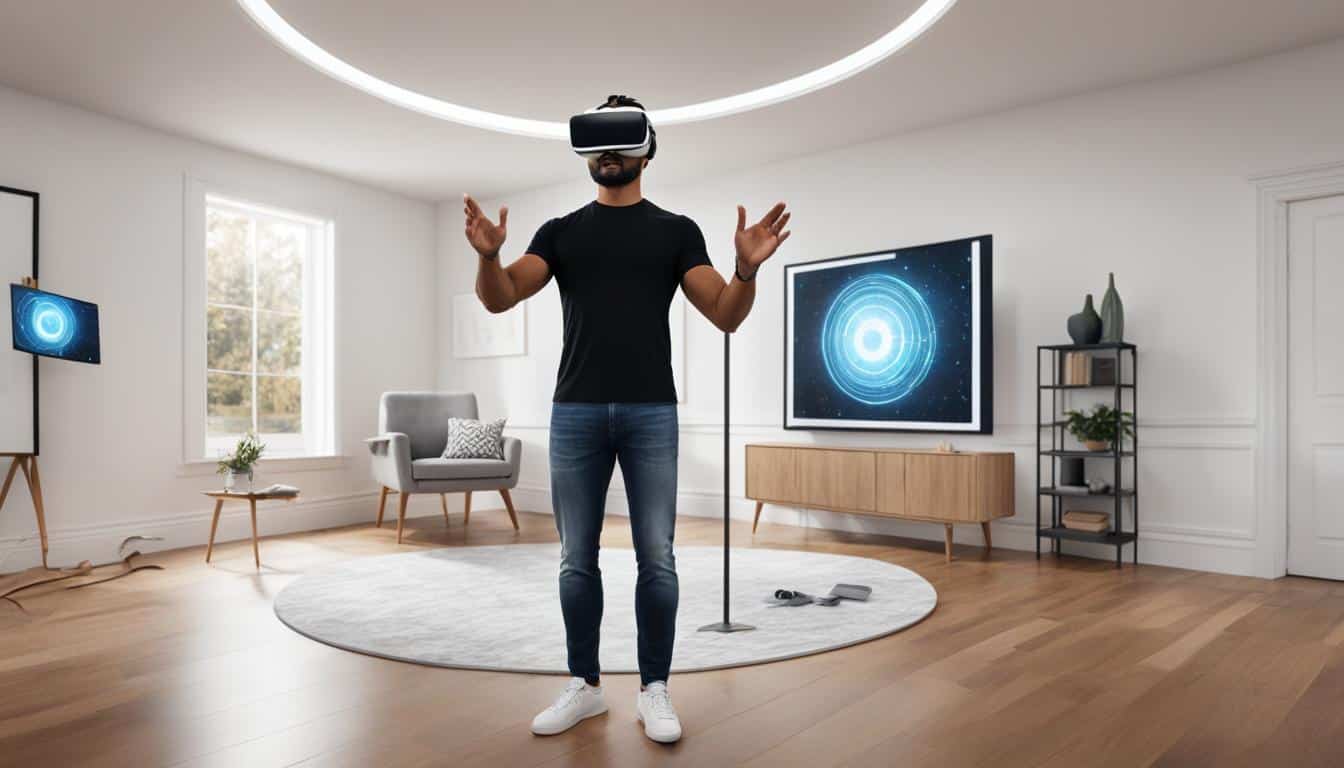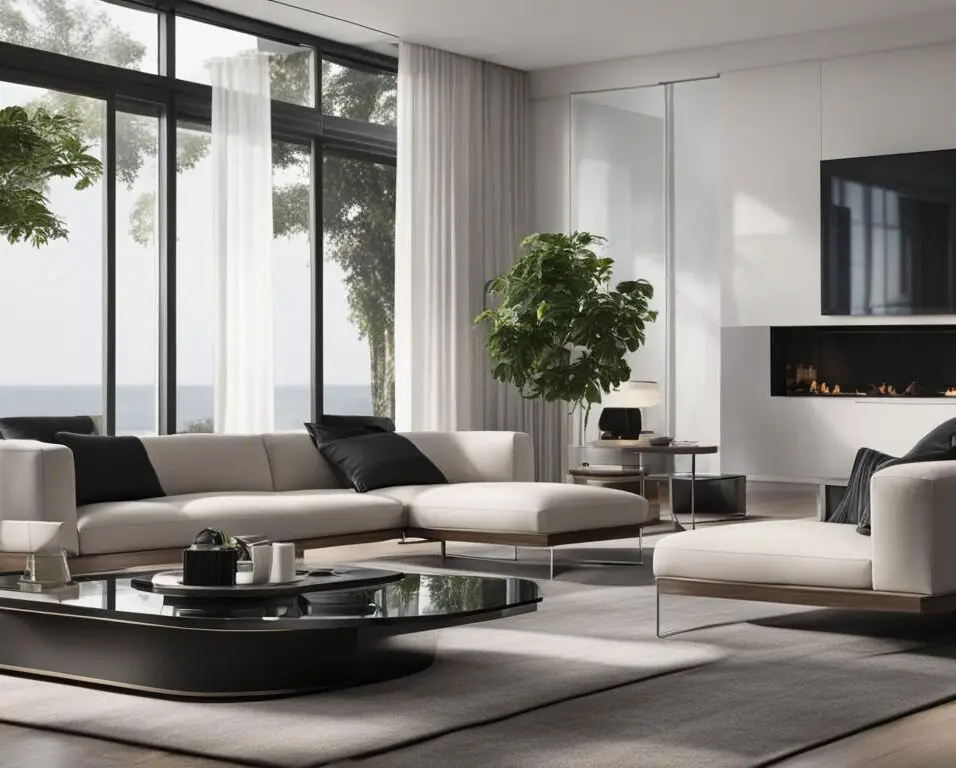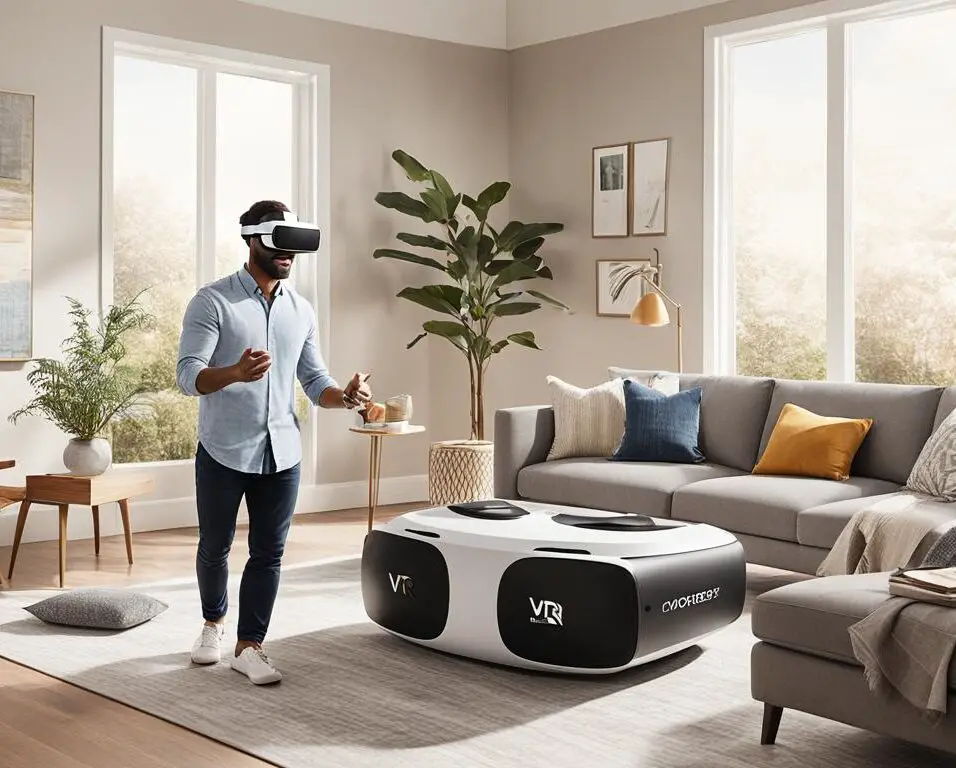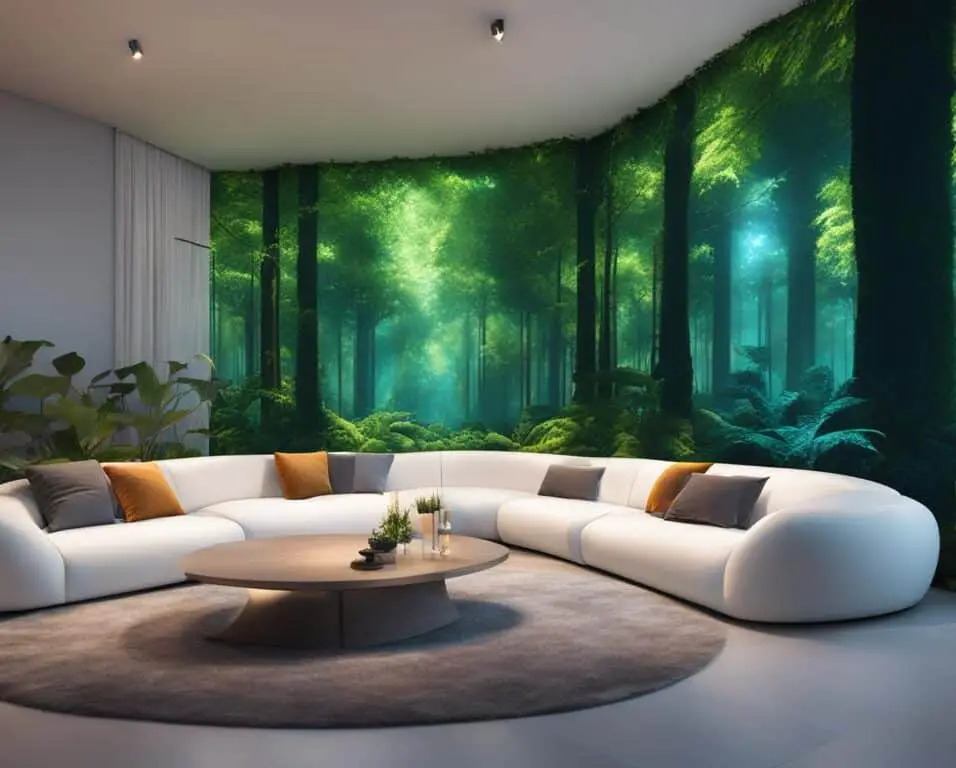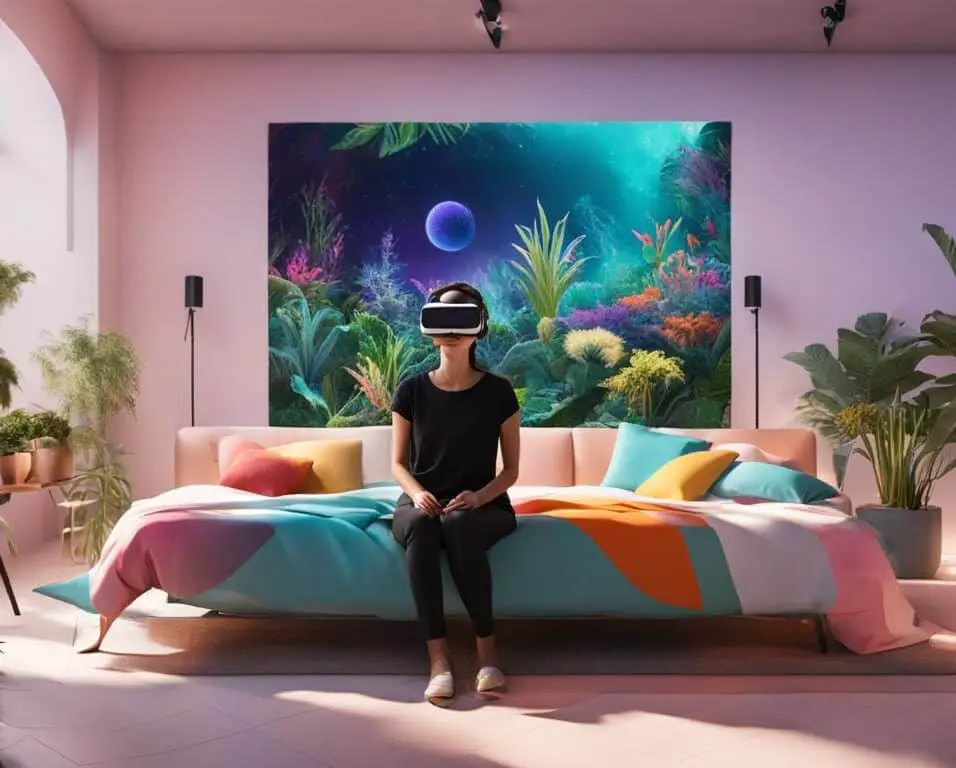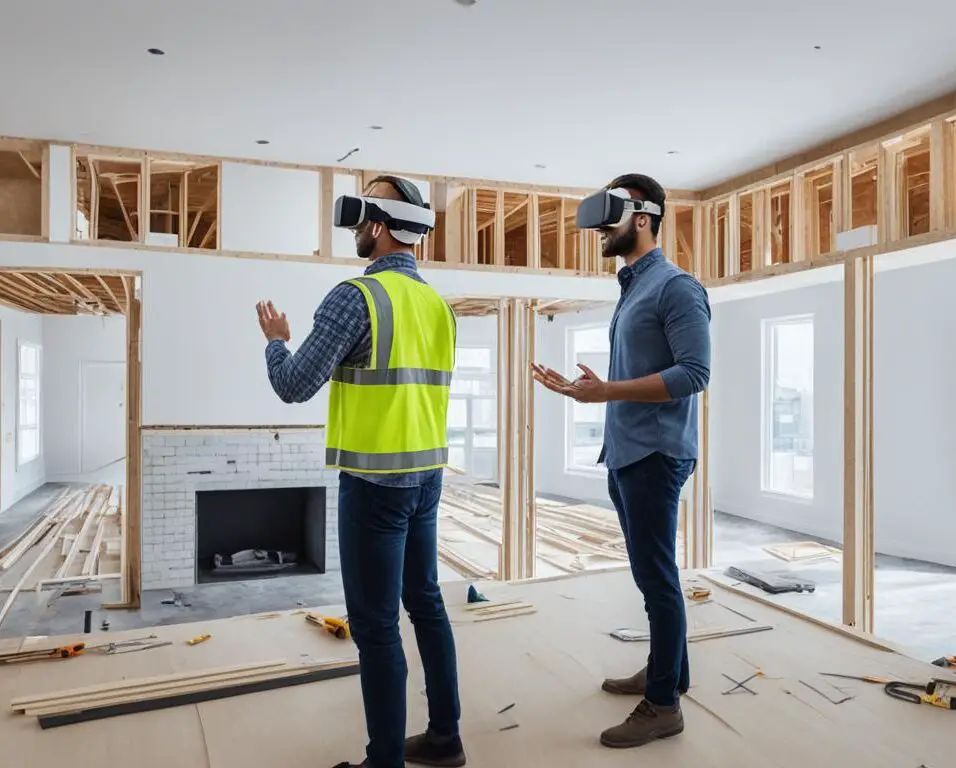The Flex Home: VR in Designing Multi-Functional Spaces
Virtual Reality (VR) technology has revolutionized the way we design multi-functional spaces in our homes. As a professional journalist, I have witnessed the profound impact of VR in transforming traditional design processes into immersive and efficient experiences. With VR, homeowners can now visualize and explore different layouts, furniture arrangements, and color schemes before making any physical changes to their spaces.
Imagine being able to walk through your virtual home, feeling the textures, and experiencing the ambiance of each room. VR allows homeowners to do just that, offering a realistic and interactive representation of their multi-functional spaces. It enables us to evaluate the functionality, flow, and aesthetics of the space, ensuring that every element comes together harmoniously.
Moreover, VR makes it incredibly easy to experiment with various design options. With a simple flick of a virtual wand, furniture arrangements can be changed, wall colors can be altered, and appliances can be added or removed, allowing homeowners to find the perfect design that aligns with their preferences and needs.
The benefits of VR in designing multi-functional spaces extend beyond the aesthetics. It also minimizes the risks and costs associated with traditional design processes. With VR, there’s no need for physical prototypes or costly revisions. Changes can be made instantly in the virtual environment, saving both time and money.
Key Takeaways:
- VR technology revolutionizes the design process by allowing homeowners to visualize and experience different layouts before making any physical changes.
- VR provides a realistic and interactive representation of multi-functional spaces, enabling homeowners to evaluate functionality and aesthetics.
- VR allows for easy experimentation with design options, leading to the discovery of the perfect layout and arrangement.
- Using VR in design reduces risks and costs associated with traditional processes by eliminating the need for physical prototypes and allowing for quick modifications.
- As VR technology advances, we can expect even more exciting developments in the design of multi-functional spaces.
Benefits of VR in Designing Multi-Functional Spaces
Virtual Reality (VR) technology offers numerous benefits when it comes to designing multi-functional spaces. Let’s explore how VR enhances the design process and delivers exceptional results for homeowners.
Immersive and Realistic Experience
VR enables homeowners to fully immerse themselves in their virtual spaces, providing a realistic experience. Through VR simulations, users can walk through and interact with their designed spaces, gaining a comprehensive understanding of the layout and functionality. This immersive experience allows homeowners to evaluate the aesthetics, flow, and practicality of the space before any physical changes are made.
Quick and Easy Modifications
One of the key advantages of VR is its ability to facilitate swift modifications. With a VR headset and software, homeowners can instantly make changes to their virtual space, including altering the layout, rearranging furniture placements, and experimenting with different color schemes. This flexibility empowers homeowners to explore various design possibilities and find the perfect combination that suits their preferences and needs.
Cost-Effective and Time-Efficient
Designing multi-functional spaces traditionally involves physical prototypes, which can be expensive and time-consuming. However, VR eliminates the need for physical models, saving both time and costs. Homeowners can visualize and iterate their designs virtually, minimizing the risks associated with making changes in the physical realm. Additionally, VR speeds up decision-making processes, as adjustments can be made quickly and efficiently in the virtual environment.
“VR technology allows homeowners to accurately envision their ideal spaces and make informed design choices without the constraints and uncertainties of traditional methods.”
Enhanced Collaboration
A major advantage of VR is its potential for remote collaboration. Architects, interior designers, and homeowners can virtually share and explore the designed spaces, regardless of geographical location. This facilitates seamless communication and collaboration, enabling real-time feedback and adjustments. Virtual collaboration eliminates the need for physical meetings and site visits, making the design process more efficient and accessible for all parties involved.
In conclusion, VR brings immense benefits to the design of multi-functional spaces. From providing an immersive and realistic experience to enabling quick modifications and enhancing collaboration, VR revolutionizes the way homeowners conceptualize and create their ideal living spaces. With the ability to visualize and refine designs in a cost-effective and time-efficient manner, VR empowers homeowners to transform their visions into tangible realities.
Applications of VR in Multi-Functional Space Design
Virtual Reality (VR) technology has a wide range of applications in the design of multi-functional spaces. Let’s explore some of the key ways in which VR is transforming the way architects, designers, and homeowners approach the design process.
Enhanced Presentations and Engaging Experiences
Architects and interior designers can leverage VR technology to create immersive and realistic presentations of their concepts and designs. By using VR, they can transport clients into a virtual representation of the space, allowing them to explore and experience it firsthand. This interactive approach enhances client engagement and provides a deeper understanding of the design intent.
“VR technology has revolutionized the way I present my designs to clients. It allows them to step into the virtual space, providing a level of immersion that 2D drawings simply cannot achieve. It helps me effectively communicate my vision and receive valuable feedback early in the design process.” – Jane Adams, Interior Designer
Remote Collaboration and Real-Time Feedback
VR also enables remote collaboration between homeowners and designers. Through virtual walkthroughs, homeowners can remotely join designers in the virtual space, allowing them to provide real-time feedback and make informed design decisions. This eliminates the need for physical meetings and site visits, saving time and resources.
Designing Versatile Spaces
One of the significant advantages of VR in multi-functional space design is the flexibility to experiment with different layouts and functions. VR allows designers to create versatile spaces such as home offices, gyms, entertainment areas, and flexible living spaces that can adapt to the changing needs of homeowners. By virtually rearranging furniture and exploring various possibilities, designers can optimize the functionality and efficiency of the space.
Optimizing Small Spaces
For those dealing with small spaces, VR provides a powerful tool for optimizing their use. By virtually expanding the space and experimenting with different furniture arrangements, designers can find the most efficient layout that maximizes every square inch. VR enables homeowners to visualize the potential of their small space and make informed decisions on how to make the most of it.
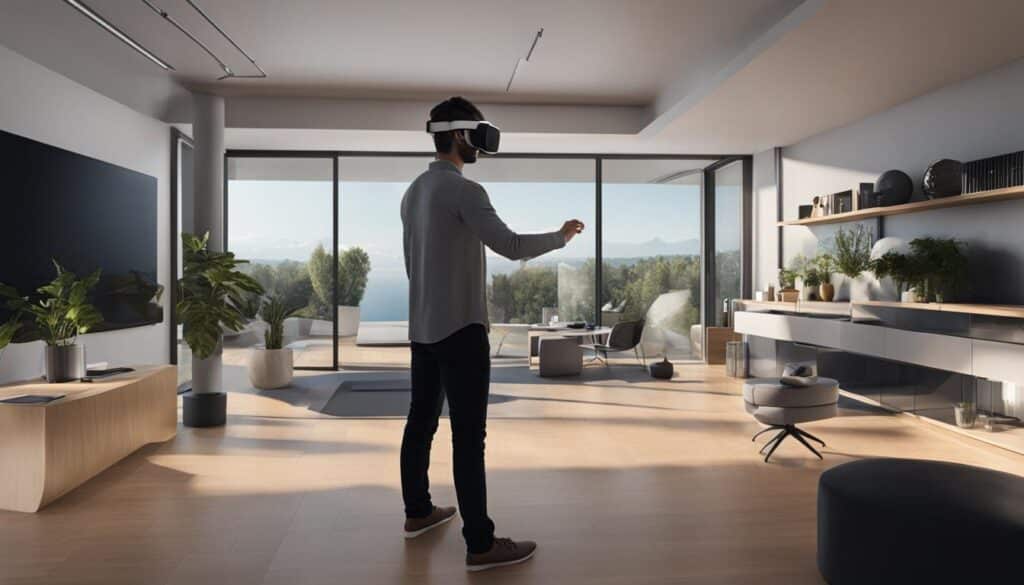
With its wide range of applications, VR is revolutionizing the design of multi-functional spaces. From enhanced presentations to remote collaboration, VR enables designers and homeowners to unlock their creativity and make informed decisions that result in functional and visually appealing spaces.
Future Trends in VR for Multi-Functional Space Design
As VR technology continues to advance, we can expect to see exciting developments in multi-functional space design.
One trend is the integration of VR with augmented reality (AR), allowing homeowners to overlay virtual elements onto their physical spaces, further enhancing the design possibilities. With this integration, users can visualize how different furniture pieces or decor items will look in their actual living spaces. By virtually placing and arranging various objects, homeowners can create a more accurate representation of their desired designs.
Another trend is the use of AI-powered VR, where algorithms can analyze user preferences, lifestyle patterns, and space constraints to generate personalized design options. By incorporating machine learning algorithms, VR platforms can offer tailored recommendations, suggesting furniture layouts, color schemes, or even smart home features that align with individual preferences and needs. This level of customization enhances the user experience and ensures that every design decision is well-informed.
Additionally, advancements in haptic feedback technology can make the VR experience more realistic, allowing users to feel different textures and materials virtually. With haptic feedback, users can get a sense of the tactile qualities of various surfaces, enabling them to make more informed decisions about material choices. This can be particularly useful in selecting flooring types, wall coverings, and fabric textures.
| Trend | Description |
|---|---|
| Integration of VR with AR | Overlay virtual elements onto physical spaces, enhancing design possibilities. |
| AI-powered VR | Algorithms analyze user preferences and generate personalized design options. |
| Advancements in haptic feedback technology | Allows users to feel textures and materials virtually, aiding material selection. |
Conclusion
Virtual Reality (VR) has revolutionized the way we design multi-functional spaces, offering a host of benefits and applications. By leveraging VR technology, homeowners can now visualize and experience different layouts, making quick modifications to achieve their perfect design. Moreover, VR eliminates the costs associated with traditional design processes by eliminating the need for physical prototypes.
Looking ahead, as VR technology continues to advance, we can anticipate even more exciting developments in multi-functional space design. The Flex Home concept, empowered by VR, provides adaptable and efficient spaces that cater to the changing needs of homeowners. With VR, the possibilities for designing multi-functional spaces are virtually limitless.
In conclusion, VR has transformed the way we approach designing spaces, enabling us to create personalized and functional environments. Whether it’s optimizing small spaces or collaborating remotely with designers, VR in designing multi-functional spaces presents a game-changing solution.
FAQ
How does VR technology revolutionize the design of multi-functional spaces?
VR technology revolutionizes the design of multi-functional spaces by allowing homeowners to visualize and experience different layouts and configurations. It provides a more immersive and realistic experience, enabling users to walk through and interact with their virtual spaces.
What are the benefits of using VR in designing multi-functional spaces?
The use of VR in designing multi-functional spaces offers several benefits. Firstly, it allows for a more immersive and realistic experience, helping homeowners to evaluate the functionality and aesthetics of the space before making any physical changes. Secondly, VR enables quick and easy modifications, allowing homeowners to instantly change the layout, furniture placements, and color schemes. Additionally, VR minimizes the risks and costs associated with traditional design processes.
In what applications can VR be utilized in the design of multi-functional spaces?
VR can be utilized in various applications for the design of multi-functional spaces. Architects and interior designers can use VR to present their concepts and designs to clients, providing a more immersive and engaging experience. Homeowners can also collaborate with designers remotely, as they can virtually walk through the space and provide real-time feedback. VR is particularly helpful in designing versatile spaces such as home offices, gyms, entertainment areas, and flexible living spaces.
What future trends can we expect in VR for multi-functional space design?
In the future, we can expect to see exciting developments in VR for multi-functional space design. One trend is the integration of VR with augmented reality (AR), allowing homeowners to overlay virtual elements onto their physical spaces. Another trend is the use of AI-powered VR, where algorithms can analyze user preferences, lifestyle patterns, and space constraints to generate personalized design options. Advancements in haptic feedback technology may also make the VR experience more realistic, allowing users to feel different textures and materials virtually.
How does VR impact the design process for multi-functional spaces?
VR revolutionizes the design process for multi-functional spaces by offering homeowners the ability to visualize and experience different layouts. It allows for quick and easy modifications, minimizing costs associated with traditional design processes. VR also facilitates remote collaboration between homeowners and designers, enhancing the efficiency of the design process.



